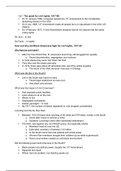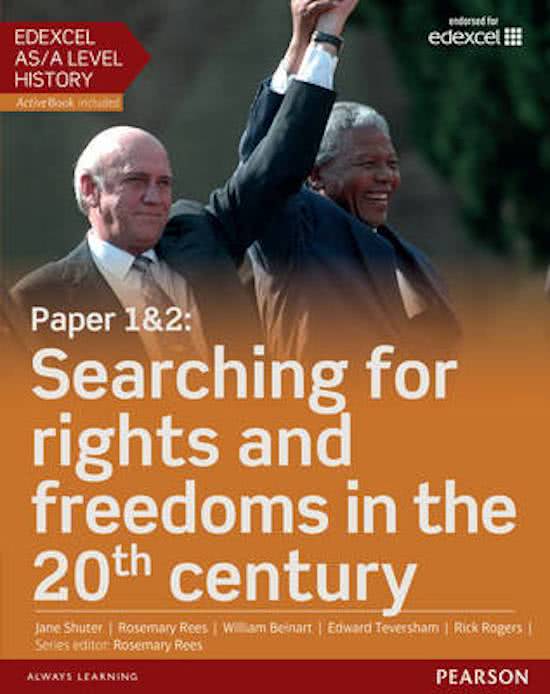1.2 – The quest for civil rights, 1917-80
On 31 January 1865, Congress passed the 13th Amendment to the Constitution,
abolishing slavery in the USA
On 9 July 1868, 14th Amendment made all people born or naturalised in the USA, US
citizens
On 3 February 1870, 15 the Amendment declared that all US citizens had the same
voting rights
De Jure – In law
De Facto – In reality
How and why did Black Americans fight for civil rights, 1917-55
Why fight for civil rights?
After the First World War, B. Americans found they still struggled for equality
o Faced discrimination, segregation and violence
In most places they were ‘last hired, fist fired’
They also had the lowest paid jobs
In 1919, there were about 25 anti-black riots, set off by police injustice
o The worst of the ‘Red Summer’ riots was in Chicago
What was life like in the South?
Life in the South was hard for many
o Faced legal restrictions at every turn
o Had black only schools
What was the impact of Jim Crow laws?
Had separate public facilities
Laws where to sit on the ram
Where to live
Segregated workplaces
Harder passages – to vote
By 1917, the number of blacks registered to vote dropped considerably
Lynching and the Ku Klux Klan
Between 1915-30 there were lynching of 65 white and 579 black, mostly in the South
o Some didn’t have to commit a crime
o Southern Lynching’s were often advertised beforehand
The KKK, was against any non-WASP group, but especially blacks
o Members lived all over the US
o Estimated members of between 3-8 million
o In the South some had real political and social power
o Women Klan members brought their children up as white supremacist
o Rural communities created an anti-black environment
Did the federal government intervene in the South?
Black people lost political power, despite the 14th Amendment
Separate but equal
Wilson had not problem, but Harding spoke out
, What was the impact of moving North, 1917-32?
Migration to the North - The Great Migration = 6 million
o 1910, 89% of blacks
o 1970, 53% of blacks
The north was appealing due to work and to escape the South
o Offered housing, free transport and good wages
The accommodation was often cramped and often in disrepair
Not all black people had low-paid jobs
What was the impact of the migration?
Black people came to have more political power in Chicago
o They were listened to more
o Could try for positions in politics
In New York, the black population was more evenly distributed
o Blacks did not gain political power or influence
o The churches became significant bases for organising civil rights protests
o Black migrants dislodged white workers
What impact did the migration have in the South?
The labour force shrank
Farming areas had economic problems
Those who stayed in the South were seen as accepting the Jim Crow laws
What was the impact of the New Deal?
During the 1930s many blacks shifted from Republican to Democrat
o Their vote was significant in Roosevelts landslide
He did appoint black advisors
When war broke out, he issued Executive Order 8802
o Banning racial discrimination in the defence industry
New Deal measures were supposed to be colour-blind
o Put on the work for merit alone
NRA, which regulated wages and working hours
o Set the minimum wage for whites the same as blacks
Protesting against the New Deal
Many B. Americans protested about their treatment during the New Deal
Sometimes had more support from communists and other left-wing groups
Black churches set up support systems for black citizens
Women’s organisations were set up
o Housewives League of Detroit
Boycotted stores until they hired black workers
Depression in 1937, hit black workers hard
o Black workers who lost their homes got loans – 3,400 of 200,000
o In 1939, around 2 million people signed a petition asking for federal aid to
move to Africa





